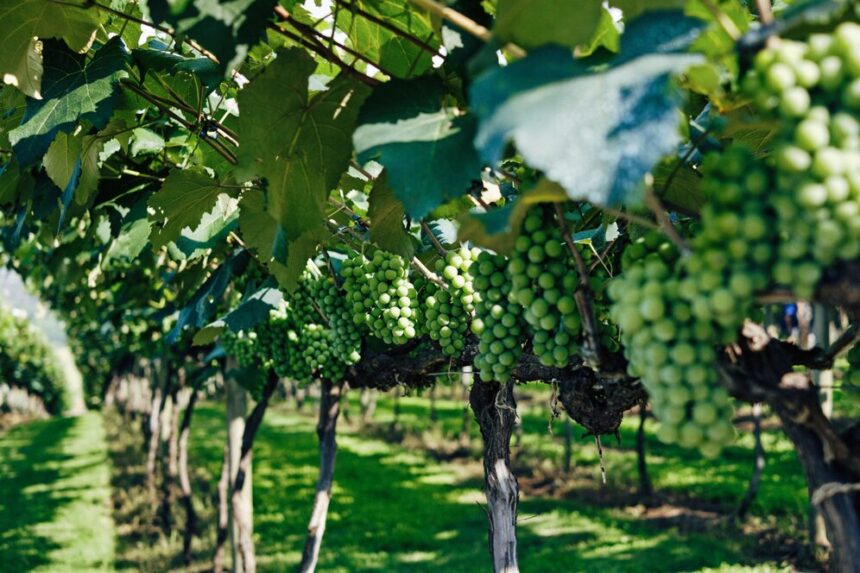Powdery mildew is a common fungal disease in vineyards, caused by Erysiphe necator. It affects grapevines by covering leaves, stems, and fruit with a white powdery coating, leading to poor fruit quality and reduced yields. The disease thrives in warm, humid conditions, making prevention essential for maintaining healthy vines. Below are effective strategies to prevent powdery mildew in vineyards.
1. Choose Resistant Grape Varieties
Some grape varieties are naturally more resistant to powdery mildew. Hybrid and disease-resistant varieties such as Chambourcin, Norton, and Frontenac can help reduce the risk of infection.
2. Ensure Proper Vine Spacing and Canopy Management
Good air circulation is essential to prevent powdery mildew. Proper vine spacing and regular pruning help improve airflow, reducing humidity levels around the plants. Removing excess leaves and shoots also allows sunlight to reach all parts of the vine, making conditions less favorable for fungal growth.
3. Use Preventive Fungicide Sprays
Applying fungicides before mildew appears is crucial. Sulfur-based fungicides and synthetic options like myclobutanil, tebuconazole, or triflumizole are effective in preventing infection. Rotating fungicides with different modes of action helps prevent resistance development.
4. Monitor Weather Conditions
Powdery mildew thrives in warm, dry conditions with high humidity. Regularly monitoring weather forecasts can help farmers time fungicide applications and other preventive measures more effectively.
5. Maintain Proper Irrigation Practices
Avoid overhead irrigation, as excessive moisture on leaves can encourage mildew growth. Instead, use drip irrigation systems to provide water directly to the roots while keeping foliage dry.
6. Use Biological Control Agents
Beneficial microbes such as Bacillus subtilis and Trichoderma species can help suppress powdery mildew naturally. These biocontrol agents can be applied as foliar sprays to prevent fungal infection.
7. Remove Infected Plant Material
If powdery mildew appears, remove and destroy affected leaves and shoots immediately to prevent the disease from spreading. Pruning infected parts of the vine can slow down the outbreak and improve overall vineyard health.
8. Apply Organic Treatments
For organic vineyards, treatments like neem oil, potassium bicarbonate, and milk sprays can help control powdery mildew. These alternatives are environmentally friendly and reduce reliance on chemical fungicides.
By implementing these preventive measures, vineyard owners can significantly reduce the risk of powdery mildew and maintain healthy grape production. Regular monitoring, good vineyard management, and timely treatments are key to protecting vines from this damaging disease.
Join 'Farmers Mag' WhatsApp Channel
Get the latest Farming news and tips delivered straight to your WhatsApp
CLICK HERE TO JOIN






